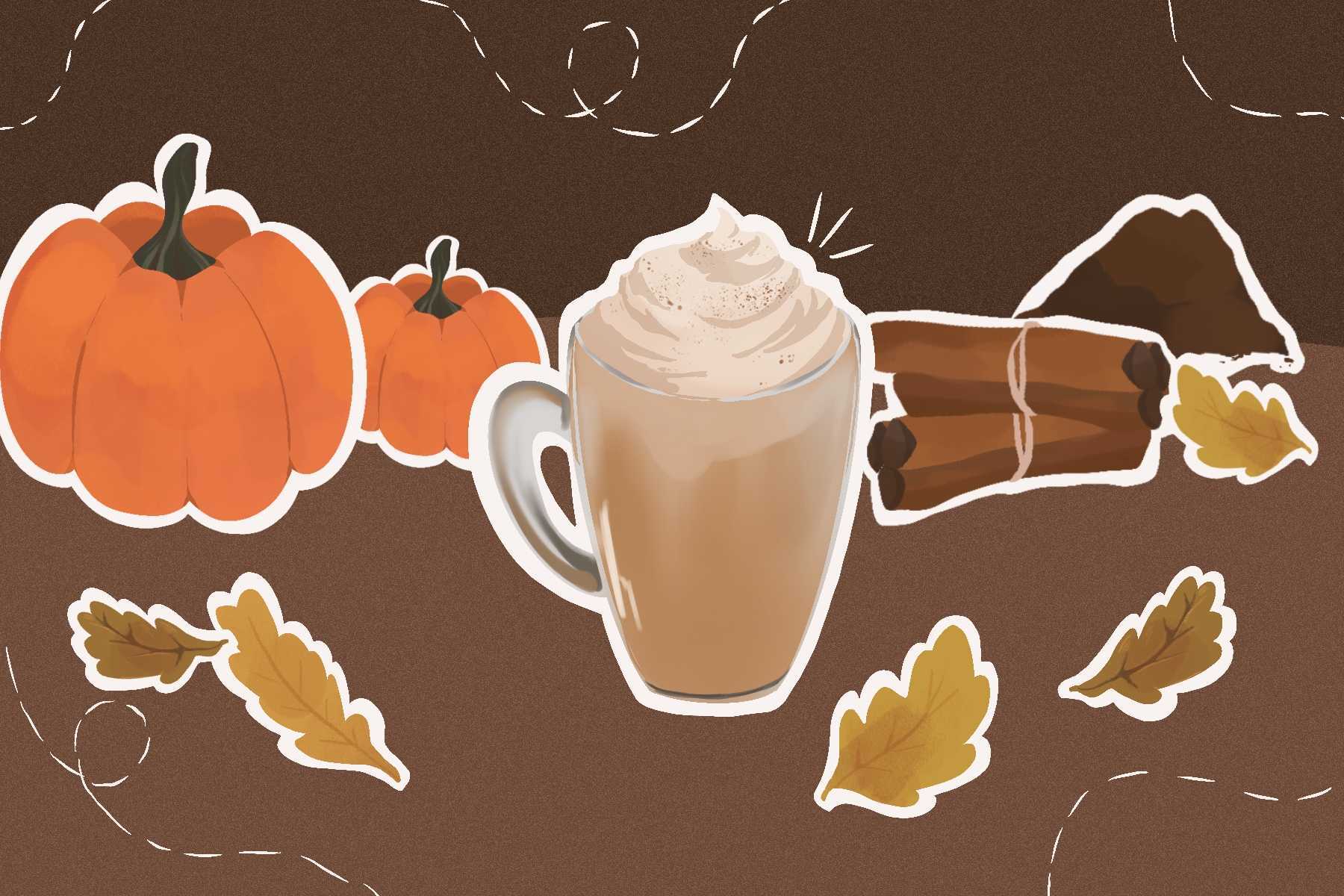To many people, pumpkin spice is a flavor that is overdone and arrives in stores too early. But how did this fall staple go from a seasonal favorite to something hated for its hype? Let’s look at the start of pumpkin spice and highlight the flavor’s growth, from beloved caffeinated drinks to unprecedented pumpkin products.
Pumpkin spice has a long, evolved history that explains its grand reputation today. Despite its name, the pumpkin spice blend does not actually contain pumpkin. Instead, it consists of variations of clove, cinnamon, ginger, nutmeg and allspice. Many of these spices became popular in the West at the turn of the 1700s, when the Dutch East India Company reached the peak of its trading empire. As a result, pumpkin pie and fall-spiced recipes became more common, and cinnamon and nutmeg pairings became more widespread.
Popular spice brand McCormick created their pumpkin pie spice blend in 1934, and while it was created for pie specifically, it could technically be sprinkled on anything. It became more and more common to see cinnamon sugar and pumpkin paired together, with pumpkin becoming common in fall cuisine. In 2003, the coffee chain Starbucks released their Pumpkin Spice Latte, affectionately dubbed the PSL by fans. Other coffee chains, such as Dunkin, 7-11 and Peet’s Coffee, as well as many small independent cafes, soon featured pumpkin spice lattes on their own menus
The drink became an instant classic and created a yearly frenzy of customers waiting for its seasonal return, causing the PSL’s presence to become integral to the Starbucks name and business model. Starbucks altered the way chain companies saw seasonal items, changing the status of temporary treats from fun rotating items to a way to change the entire market. According to an article by Forbes, Starbucks sees significant increases in sales all around when pumpkin spice returns to its menu. When the drink’s season is over, sales drop drastically.
Because of the popularity of the pumpkin spice latte, anything and everything that could be flavored or scented became pumpkin spice: Oreos, candles, cream cheese, Krispy Kreme donuts, cereals and even more outlandish items such as Spam and chips. The pumpkin spice fever prompted many skeptics and spice enjoyers to say the trend went too far. Many companies even appeared to make pumpkin products almost in a joking manner, releasing apparent spoof products such as pumpkin spice water or hard cheeses. Each year, companies compete to create better, or even just crazier, pumpkin concoctions. On Twitter, countless tweets feature some of the wildest spiced finds and offer evidence that the pumpkin craze may have passed acceptable limits.
Some of the confusion or hate toward certain pumpkin spice products can be credited to the American view of pumpkins. Though it is a winter squash that can be enjoyed in a savory way, we typically view the pumpkin as something with a sweet profile. Pie and cinnamon pairings have swayed many to believe the gourd is best served sweet. This cultural view makes things such as meat products or salty chips seem completely ridiculous, even though in other contexts (think pumpkin soup, chilis and ravioli), we fully accept the concept of savory pumpkin.
For approximately four months the PSL rules over the Starbucks menu. Many consumers have complained that the drink seems to get released earlier and earlier as the years pass, which evokes the same frustration as seeing Christmas decorations displayed in stores months early. Recent pumpkin spice seasons at Starbucks started in August, with a 2021 release within days of Aug. 23 and a 2022 release on Aug. 30. These late-summer release dates have caused pushback from social media users who state it is too soon to sell pumpkin spice and that the beloved flavor shouldn’t be featured till mid to late September.
However, given the popularity of the flavoring and its seasonal nature, it makes sense that companies would want to stretch the money-making season for as long as possible. Additionally, considering that the flavor is released nationally and globally, the weather in a given region could be suitable for PSLs by late August. While many buyers don’t mind enjoying a hot latte in 90-degree weather, many pumpkin spice-carrying stores provide iced options. Although Starbucks probably intended for the early release days to provide the option for fall-ready buyers, it doesn’t necessarily limit any other menu options.
Regardless of whether you love pumpkin spice, think it comes too early or couldn’t ever imagine yourself buying a PSL, it is easy to admit pumpkin is an important fall staple. Pumpkins have played an integral role in Halloween culture since Irish immigrants brought the pumpkin-carving tradition to the states. The tradition began by carving scary faces into the ground in order to scare away malicious spirits. Pumpkin-carving eventually became the common practice it is today and turned pumpkins into a symbol of fall. Aside from its Halloween context, pumpkin decals and decorations can now be seen all season, with pumpkin flavoring becoming a source of fascination. While pumpkin spice and plain pumpkin are technically two different flavors, they both have cemented themselves in fall culture and taken an ordinary gourd to new levels.
While it is fun to acknowledge the oftentimes outrageous or over-the-top pumpkin products, along with their early arrival in stores, the pumpkin spice brand does a lot for the fall. The iconic flavoring increases sales, fosters creativity in companies and brings the autumn spirit to children and adults alike with accessible treats. Maybe it’s time to put the pumpkin-spice disdain in the past and celebrate it as a fall-time favorite. After all, there are few foods that so easily evoke memories of crisp autumn mornings and changing leaves quite like a pumpkin spice treat.

















